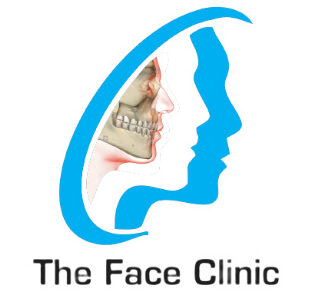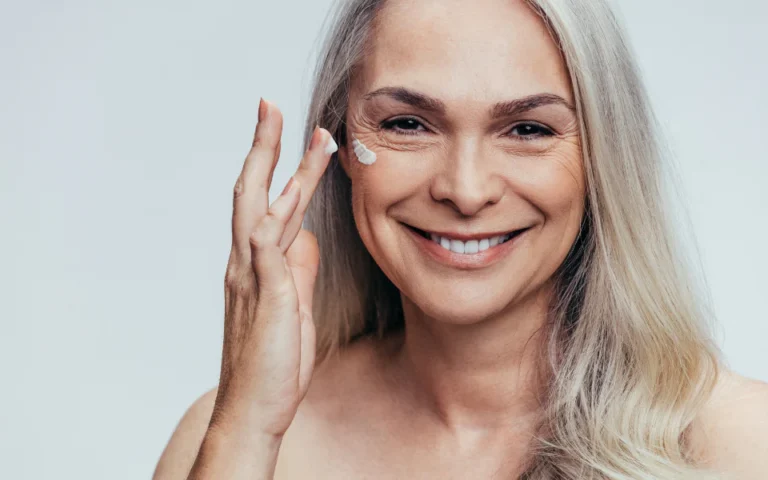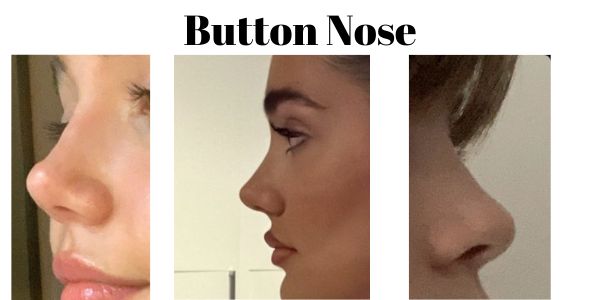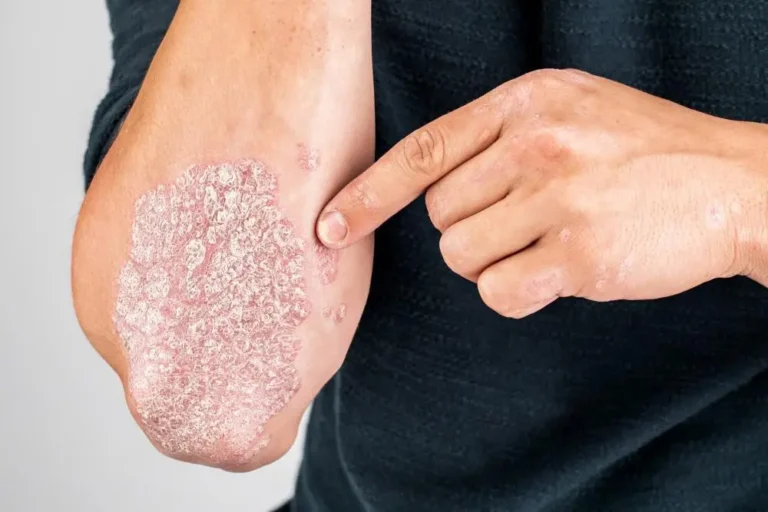Whether you’ve got a bulbous, upturned or hooked nose, it’s everyone’s most prominent facial feature. Aside from conveying one of our senses, this profile-defining detail has crossed the ages with connotations of beauty and self-consciousness alike. Of course, the thing that protrudes from the middle of our faces will be a big part of people’s identities, complimenting the features that surround it. One of the most identifiable is the roman nose shape. Though, different types of noses have different diversity across ethnicities globally
What constitutes a Roman Nose?
A Roman, or aquiline, nose is characterized by a distinct downward curvature and a visible pivot point on the bridge, giving it an arched appearance. The term “aquiline,” derived from the Latin word for eagle-like, highlights this prominent shape often seen in classic busts of notable Latin figures. This nose type can vary in the prominence of the bridge bump and may feature a drooping tip. The Roman nose is a unique and recognizable trait, adding to the distinct beauty of those who possess it.
How Do I Know if I Have a Roman-Shaped Nose?
To determine whether you have a Roman-shaped nose, also known as an aquiline or hooked nose, you can examine your nose for the following distinct characteristics:
- Prominent Bridge:
- High and Noticeable: The bridge of a Roman-shaped nose is high and prominent. This feature is noticeable as it runs down from the forehead, creating a strong, defined line along the nose.
- Definition: If your nasal bridge is clearly defined and stands out when you look at your profile, this is a key indicator of a Roman nose.
- Slight Curve:
- Gentle Curve: A Roman nose typically has a subtle curve along the bridge. This curvature is not overly pronounced but gives the nose a distinctive shape.
- Profile Examination: Check the side view of your nose to see if there is a gentle arch or curve around the bridge area. This is a signature trait of an aquiline nose.
- Strong Profile:
- Facial Balance: An aquiline nose often contributes to a strong and balanced facial profile. It tends to stand out prominently, enhancing the overall contour of the face.
- Overall Appearance: Consider how your nose influences the look of your face. If it provides a striking and memorable profile, it is likely you have a Roman-shaped nose.
By evaluating these features, you can identify whether you possess the unique and recognizable traits of a Roman nose.
Related Articles: Everything You Need To Know About Your Button Nose
Are Aquiline Noses Considered Attractive?
Aquiline noses, often seen as a mark of beauty and distinction, have been admired since classical times. The Romans, in particular, regarded the “eagle’s nose” as a symbol of nobility and dignity, which is reflected in their art and sculpture. This nose shape, characterized by a prominent bridge and a slight curve, has been celebrated in various artistic traditions, lending a regal and distinguished appearance to those who possess it. The prominence and definition it adds to the profile often enhance facial symmetry and balance, contributing to its aesthetic appeal.
However, the attractiveness of an aquiline nose is subjective and can vary greatly across different cultures and personal preferences. While some may view this nose shape as a desirable trait, different types of noses have different features based on their cultural standards of beauty. What is considered attractive in one society might not hold the same appeal in another. Therefore, while the aquiline nose has historical and cultural significance that elevates its status in certain contexts, individual opinions on beauty and attractiveness remain diverse and multifaceted.
How Can I Fix a Crooked or Hooked Nose?
Some surgical and non-surgical intervention options are available to people looking to fix their hooked noses. Here are some of them:
Surgical Interventions
Undergoing nose surgery has proven to be one of the most common and effective ways to fix a crooked or curved nose. Below are the surgical interventions available for a crooked nose:
Rhinoplasty
Rhinoplasty, also called a nose job, is a surgical process that aims to change the size, shape, or overall outlook of the nose. The surgeon may work on the nose’s bone, cartilage, and/or soft tissues during the surgery to produce the desired nose shape. Many rhinoplasty before and after pictures show that the procedure often yields the expected results.
Septoplasty
A septoplasty is a nose surgery aimed at correcting a deviated septum. This surgery is usually more functional than aesthetic, as the surgeon changes the position of the septum to make breathing easier for the patient.
Septorhinoplasty
This procedure combines the methods used in both rhinoplasty and septoplasty to achieve both functionality and aesthetics. In a septorhinoplasty, the surgeon can modify the look of the nose while also addressing breathing issues caused by a deviated septum.
It is important to note that the surgical interventions needed to fix a hooked nose depend on the specific details of a patient’s situation. Hence, we advise you to speak to one of our plastic surgeons before deciding.
Non-Surgical Interventions
Correcting a crooked nose without surgery often involves using temporary measures to create a more aesthetic appearance. These methods may not be as effective or permanent as surgical interventions. Here are some options:
Dermal Fillers
People with hooked noses can get injectable fillers like hyaluronic acid to temporarily add volume to the needed areas.
Botox
Another option is to use Botox injections to weaken the muscles, causing the deviation of the nose. While this procedure will not straighten the nose, it may improve its appearance.
Related Articles: Unveiling The Global Tapestry Of Male Nose Shapes
Roman Nose VS Greek Nose
Roman Nose
- Characteristics: The Roman nose, also known as an aquiline nose, is characterized by a prominent bridge that gives it a slightly curved or hooked appearance. The bridge often has a noticeable bump, and the nose may appear to have a downward slope or arch.
- Aesthetic Appeal: Historically, the Aquiline nose has been associated with nobility, strength, and classical beauty. It is often seen in sculptures and busts of Roman figures, reflecting dignity and a commanding presence.
- Functionality: While primarily an aesthetic feature, a significantly hooked Roman nose can sometimes lead to breathing issues, which might necessitate medical or surgical intervention.
Greek Nose
- Characteristics: The Greek nose, also known as a straight nose, is characterized by a straight nasal bridge without any bumps or curves. The profile of a Greek nose is smooth and linear from the forehead to the tip of the nose.
- Aesthetic Appeal: The Greek nose is often associated with classical beauty and ideal proportions. It is commonly depicted in ancient Greek art and sculpture, symbolizing harmony, balance, and refined aesthetics.
- Functionality: The Greek nose’s straight structure usually does not present functional issues. Its linear profile contributes to a balanced and symmetrical facial appearance, often considered ideal in various cultures.
Comparison
- Appearance: The Roman nose has a prominent, curved bridge, while the Greek nose is characterized by a straight, smooth bridge.
- Cultural Significance: Both nose types have historical and cultural significance, with the Roman nose symbolizing strength and nobility, and the Greek nose representing classical beauty and ideal proportions.
- Functional Concerns: The Roman nose may sometimes cause breathing difficulties due to its shape, whereas the Greek nose generally does not have such issues.
Conclusion
Both the Roman and Greek noses have unique characteristics that have been admired throughout history. The Roman nose stands out for its strong, distinctive profile, while the Greek nose is celebrated for its straight, harmonious appearance. Each nose type contributes to facial aesthetics in its own way, reflecting diverse ideals of beauty and symmetry.
What is Crooked Nose Surgery, and When is It Necessary?
Crooked nose surgery, also known as rhinoplasty, is a procedure designed to correct or reshape a crooked, deviated, or curved nose. Typically performed under general anesthesia, the surgery takes between 90 minutes and three hours to complete.
When is Crooked Nose Surgery Necessary?
- Aesthetic Reasons:
- Many individuals opt for rhinoplasty to straighten a curved or hooked nose, enhancing facial symmetry and appearance.
- Functional Reasons:
- A crooked or hooked nose can cause breathing difficulties, necessitating surgery to improve nasal function and airflow.
Related Articles: Treatment Of Eczema On Face
Common indications Among Patients
Rhinoplasty is a popular procedure among both male and female patients. Men, in particular, may seek the surgery to address functional issues stemming from genetics or injuries, such as a broken nose. However, aesthetic motivations are also common.
Post-Surgery Expectations
After the rhinoplasty surgical procedure, patients may experience swelling or bruising around the cheeks or upper lips. This is a normal part of the recovery process and typically subsides within ten days.
Revision Rhinoplasty
In some cases, a second operation, known as revision rhinoplasty, may be needed to refine the results of the initial surgery. This is a more complex procedure, and it is advisable to seek expert advice from experienced plastic surgeons before proceeding.
By understanding the purposes and expectations of crooked nose surgery, individuals can make informed decisions and achieve desired outcomes with the guidance of skilled medical professionals.
What Are the Benefits of Crooked Nose Surgery?
Crooked nose surgery, or rhinoplasty, can offer numerous benefits to patients, addressing both aesthetic and functional concerns. Here are the detailed benefits:
Improved Aesthetics
One of the primary reasons people seek nose surgery is to enhance the appearance of their nose. By correcting deviations and reshaping the nose, rhinoplasty can significantly improve its overall aesthetics, making it more proportionate and visually appealing.
Enhanced Facial Harmony
A crooked nose can disrupt facial symmetry, impacting the overall harmony of a person’s appearance. Crooked nose surgery can align the nose with other facial features, creating a more balanced and symmetrical look, which is often perceived as more attractive.
Better Breathing
A deviated septum associated with a crooked nose can lead to breathing difficulties. Rhinoplasty can address this issue by straightening the septum, thereby improving airflow and making breathing easier for the patient.
Correction of Trauma or Injury
In cases where the nose has suffered trauma or injury, rhinoplasty can be used to restore its original shape and function. This surgical intervention can help patients regain the appearance and structural integrity of their nose, as it was before the injury.
Correction of Congenital Issues
Many individuals are born with congenital nasal problems, including a crooked nose. Crooked nose surgery can effectively address these congenital issues, providing patients with a more natural and aesthetically pleasing nasal shape.
Boosted Self-Confidence
Undergoing crooked nose surgery often results in a significant boost in self-confidence and self-esteem. By improving the appearance and functionality of their nose, patients can feel more comfortable and confident in their appearance, enhancing their overall sense of well-being.
By addressing these diverse concerns, crooked nose surgery offers comprehensive benefits that improve both the aesthetic appeal and functional performance of the nose, leading to enhanced quality of life for patients.







One Comment